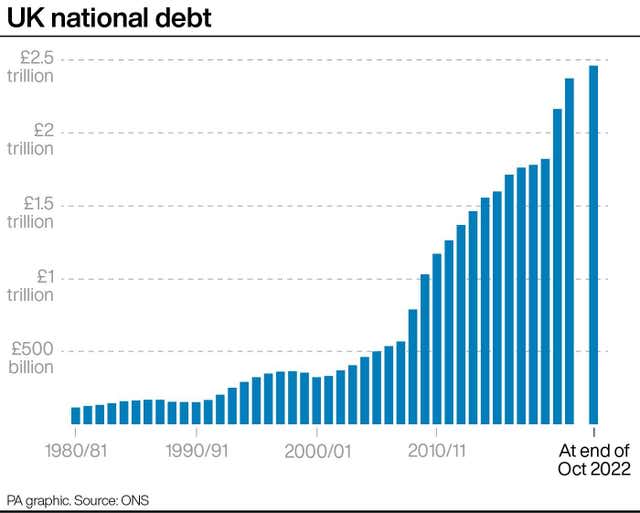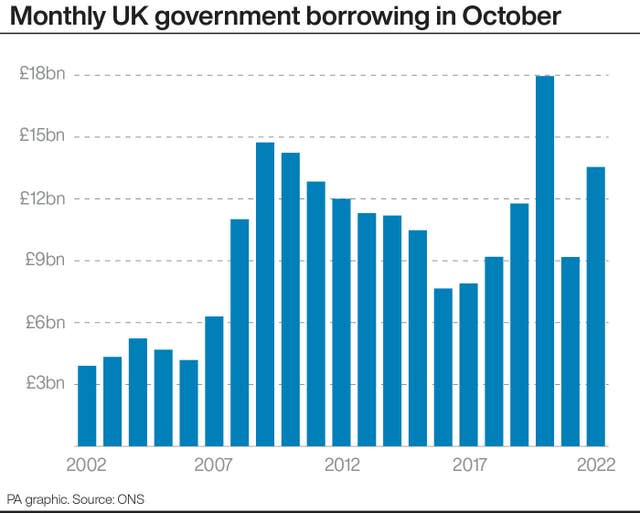Government borrowing grows to £13.5bn amid energy support scheme costs
Pressure on the Chancellor is rising as Government borrowing struck £13.5 billion in October as it booked the first costs of the energy support schemes for households.
Jeremy Hunt warned there is “no easy path to balancing the nation’s books” after the scale of increased spending was unveiled.
The Office for National Statistics (ONS) said the reading was £4.4 billion higher than the same month last year and was the fourth highest figure for October on record.

The figure for October was, nevertheless, below the expectations of economists, with a consensus of experts predicting borrowing of £21 billion for the month.
Total public sector spending grew to £91.2 billion in October, after central Government spending increased by £6.5 billion to £76.8 billion for the month.
The ONS estimated that this included around £3 billion on the cost of energy support schemes, including £1.9 billion for the £400 home energy discount payments.
Chancellor Jeremy Hunt said: “It is right that the Government increased borrowing to support millions of business and families throughout the pandemic and the aftershocks of Putin’s illegal invasion of Ukraine.

“But to tackle inflation and ensure the economic stability needed for long-term growth, it is vital that we put the public finances back on a more sustainable path.
“There is no easy path to balancing the nation’s books but we have taken the necessary decisions to get debt falling while actively taking steps to protect jobs, public services and the most vulnerable.”
Meanwhile, public sector receipts – money gained from the public sector, largely through taxes – were £77.6 billion for the month.
The Government also felt the impact of continued increases in the interest payments paid by the state on its debt, after a raft of interest hikes by the Bank of England and rises in inflation.
In October, the interest payable on central Government debt hit £6.1 billion, including £3.3 billion from debt interest payments linked to Retail Prices Index (RPI) inflation.

The fresh data comes days after the Office for Budget Responsibility (OBR) said Government borrowing for the year is set to be higher than it originally forecast in March.
It predicted that the public sector will borrow £177 billion by the end of the financial year, which would be the second highest figure since 1994.
OBR estimates on Thursday also indicated that higher interest rates mean that the cost of servicing Government debt will double to over £120 million next year and make public finances “more vulnerable to future shocks”.
It came as the OBR also forecast that the UK economy is already in a recession which will last “just over a year”.
Martin Beck, chief economic adviser to the EY Item Club, said: “Given that last week’s OBR forecast was based on relatively high assumptions for interest rates and gilt yields, the EY Item Club thinks it is quite possible that the public finances will perform better than the OBR anticipates.
“This could mean that the Government is able to pare back some of the fiscal tightening that is currently planned for 2025-2026 and beyond.”

 Yahoo Finance
Yahoo Finance 